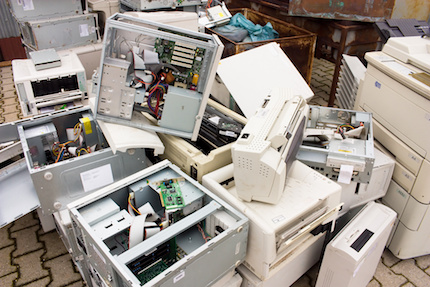
There is hardly a household or a business today that isn’t simply chock full of IT equipment of one form or another. What’s more, the rapid rate of technological development in the world of IT means that equipment is replaced at far more regular intervals than it ever has been before. What that means, in turn, is that there is far more IT waste generated today in the form of old equipment that must be disposed of.
Due to the sheer volume of this waste and the fact that some forms of IT equipment can be dangerous to the environment or to people’s health if disposed of improperly, there is now also quite strict legislation in place regarding IT recycling. The most notable example of such legislation are the Waste Electrical and Electronic Equipment (WEEE) Directives.
The Key Tenets of the WEEE Directives
An element of both UK and EU law, the WEEE Directives are aimed at ensuring that a higher percentage of waste IT equipment is properly and safely recycled. In order to achieve this, they set down a number of requirements for companies who produce such equipment and those who sell it, as regards its ultimate disposal.
Producers of electrical and electronic goods, firstly, are required to register themselves as such and then have a number of other requirements which they must also fulfil. All of their products, for example, must bear a crossed out wheelie bin symbol to show that they cannot be simply disposed of as household waste and must instead be recycled.
Beyond this, too, producers of such equipment are also required to keep records of their own recycling and environmentally sound treatment of WEEE. Those records, as well as information on the electrical and electronic products they produce, are legally required to be kept for at least four years.
Finally, a registered producer of electrical and electronic equipment must also sign up to and join a Producer Compliance Scheme (PCS). A PCS is an official scheme made up of a number of different registered producers, which is set collection targets when it comes to the amount of WEEE collected and recycled. Each firm within a given PCS is responsible for a certain proportion of the recycling target set for the entirety of the PCS.
The current WEEE Directives, too, set out similarly specific requirements for any business which sells or imports electrical or electronic equipment. Those such businesses, for instance, must provide their customers with a compliant and environmentally friendly way of disposing of old household electrical and electronic equipment when buying a replacement product.
That means that retailers must either provide a collection service for such old products or allow customers to send them to them free of charge. What’s more, electrical and electronic product retailers are required by the WEEE Directives to provide to customers written information of the collection or disposal services which they do offer.
The above, therefore, represents a brief and yet fairly comprehensive overview of the current WEEE Directives which represent that most important legislation currently in place when it comes to IT recycling.
